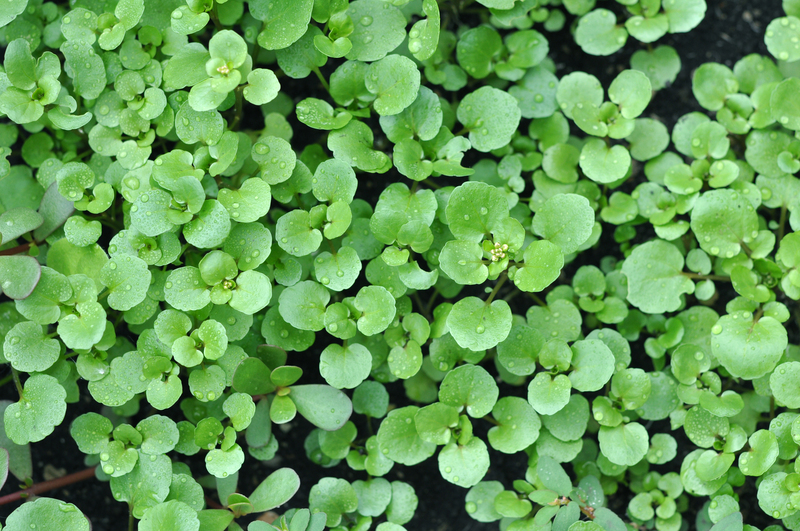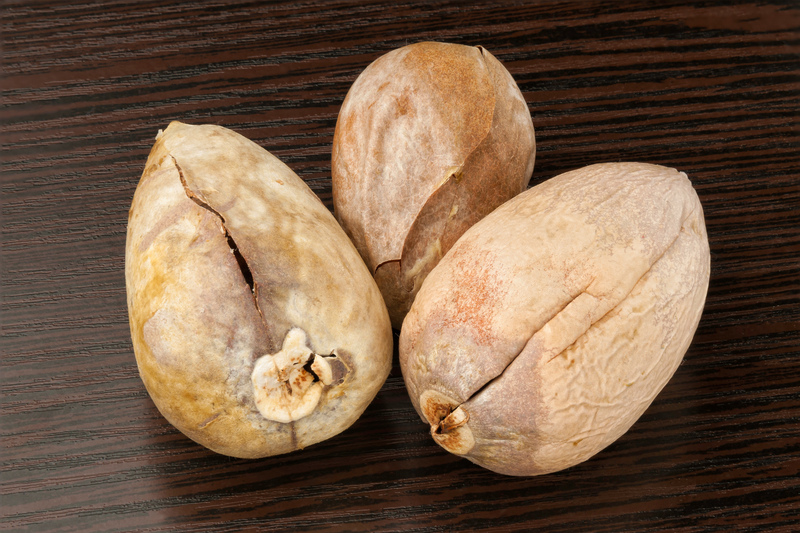Vertical Gardening for Eco-Friendly Homes
Posted on 27/08/2025
Vertical Gardening for Eco-Friendly Homes: An In-Depth Guide
Vertical gardening has rapidly emerged as a sustainable gardening technique for individuals committed to transforming their living spaces into environmentally friendly sanctuaries. Whether you live in a high-rise apartment, own a small urban home, or simply want to make the most of limited outdoor or indoor space, this innovative approach offers remarkable benefits. In this comprehensive article, we will explore everything you need to know about vertical gardening for eco-friendly homes--from its environmental impact to practical design tips and the best plant choices.

Why Choose Vertical Gardening?
The rise of eco-conscious lifestyles has driven many homeowners to seek greener solutions for their gardens and interiors. Vertical gardens, also known as living walls or green walls, are a smart, stylish, and space-saving way to incorporate nature into your daily life. Let's examine some compelling reasons for embracing vertical gardening in eco-friendly homes:
1. Space Efficiency
- Utilize unused vertical spaces--walls, fences, balconies, and even indoor areas--for lush, thriving gardens.
- Perfect solution for urban gardening and small apartments where horizontal space is at a premium.
2. Promoting Sustainability
- Reduces carbon footprint: Growing plants vertically helps purify the air, sequester carbon dioxide, and cool the surrounding environment.
- Minimizes resource use: Vertical gardens require less soil and water compared to traditional gardens, making them eco-friendly by design.
3. Enhancing Indoor Air Quality
- Plants absorb toxins and pollutants, creating healthier indoor environments with improved oxygen levels.
- Ideal for allergy sufferers and families seeking a natural air filtration solution.
4. Thermal Insulation & Energy Saving
- Living walls act as natural insulators, helping regulate indoor temperatures and lowering energy consumption.
- Reduce dependence on artificial heating and cooling systems, contributing to a greener lifestyle.
Types of Vertical Gardens for Eco-Friendly Homes
There are numerous ways to implement vertical gardening, each offering specific advantages and creative possibilities. Below, we outline popular types of vertical gardens suitable for eco-conscious homeowners:
1. Wall-Mounted Planters
Wall-mounted planters consist of shelves, pocket hangers, or specially designed modular systems that attach directly to walls. These are highly customizable and easy to install both indoors and outdoors.
- Ideal for herbs, succulents, and small flowering plants.
- Allow for artistic arrangements and flexible layouts.
2. Freestanding Vertical Structures
For renters or those wanting portability, freestanding frames or towers offer versatility. These can be placed anywhere and moved as sunlight patterns change.
- Useful for patios, balconies, and even rooftops.
- Support heavier plants such as vegetables or tropical species.
3. Hydroponic Living Walls
Hydroponic vertical gardens rely on water-based nutrient solutions instead of traditional soil, making them water-efficient and highly productive.
- Often used for kitchen gardens indoors.
- Excellent for growing leafy greens and culinary herbs year-round.
4. Recycled Materials Gardens
Eco-friendly enthusiasts often upcycle old pallets, bottles, or even gutters to craft unique vertical garden installations. These creative projects reduce waste while beautifying homes.
- Sustainable gardening at its best: make use of discarded items rather than investing in new products.
- Encourages DIY spirit and personalized garden design.
Best Plants for Vertical Gardening in Eco-Homes
Plant selection is crucial for a thriving green wall. The right choices depend on location, light availability, and desired aesthetics. Here are some top picks for vertical garden plants suited for eco-friendly environments:
Indoor Vertical Gardening Plants
- Pothos (Epipremnum aureum): Low-maintenance, purifies air, thrives in indirect light.
- Ferns: Provide lush greenery with minimal care.
- Spider Plant (Chlorophytum comosum): Excellent air purifier, resilient.
- Peace Lily (Spathiphyllum): Removes toxins and adds elegance.
- Philodendron: Versatile and vibrant.
Outdoor Vertical Garden Varieties
- Succulents: Require little water, tolerant of sun and heat.
- Herbs (Basil, Thyme, Oregano, Mint): Perfect for kitchen gardens, easy to harvest.
- Strawberries: Delicious fruits that grow well in pockets or stacked planters.
- Leafy greens (Lettuce, Spinach, Kale): Suitable for hydroponic systems.
- Flowering plants (Petunias, Nasturtium, Begonias): Offer color and attract pollinators.
Native and Drought-Tolerant Species
For true eco-friendliness, consider native plants and species requiring less irrigation. These options promote local biodiversity and reduce your garden's environmental footprint.
How to Start Your Vertical Garden at Home
Embarking on your own eco-friendly vertical gardening project might seem daunting, but with the right planning and materials, it is entirely achievable--even for beginners. Follow the steps below for a successful setup:
Step 1: Assess Your Space
- Identify suitable walls or surfaces (indoor or outdoor) that receive adequate light.
- Measure and plan the desired size and style of your vertical garden.
Step 2: Gather Materials
- Choose a frame or vertical system (pre-made kits, DIY pallets, or recycled containers).
- Select quality potting mix or hydroponic medium.
- Install an efficient watering system--drip irrigation is ideal for eco-friendly gardens.
Step 3: Pick Sustainable Plants
- Opt for organic, non-GMO seeds and seedlings.
- Consider companion planting to maximize diversity and pest resistance.
Step 4: Plant and Arrange
- Place shade-tolerant species at lower levels; sun-loving plants at the top.
- Stagger and layer for lush, visually appealing coverage.
Step 5: Maintain and Monitor
- Water regularly but avoid overwatering--vertical gardens tend to dry out faster.
- Prune and fertilize using organic options for sustainability.
- Watch for pests and opt for natural remedies.
Eco-Friendly Benefits of Vertical Gardening
Embracing vertical gardening for green homes provides numerous environmental, social, and health benefits:
- Improved energy efficiency due to natural insulation from living walls.
- Enhanced biodiversity in urban areas--plants attract pollinators and beneficial insects.
- Stormwater management--vertical gardens can absorb rainwater, reducing runoff and erosion.
- Urban heat island effect mitigation due to greenery reducing reflected heat.
- Well-being boost--contact with living plants has been linked to better mental health and productivity.
Vertical Garden Maintenance Tips for Sustainable Living
A successful sustainable vertical garden requires occasional upkeep to ensure maximum environmental benefit. Here are expert tips to keep your green wall healthy and eco-friendly:
- Install a rainwater catchment system to irrigate your plants naturally.
- Use organic fertilizers and compost to promote soil health and reduce chemical runoff.
- Monitor for leaks or water waste, especially with hydroponic systems.
- Rotate plant species seasonally to maintain soil nutrients and diversity.
- Regularly inspect for pests and treat with eco-friendly solutions such as neem oil or companion predatory insects.
Creative Ideas for Vertical Gardening in Eco-Friendly Homes
Looking to add a personal touch or tackle unique challenges? Here are a few creative and sustainable ways to reinvent vertical gardening:
- Upcycle old furniture: Transform bookshelves, ladders, or shoe organizers into stylish planters.
- Combine edible and decorative plants for a functional and visually stunning wall.
- Integrate smart sensors for automated water and light optimization.
- Host educational workshops and share your sustainable gardening know-how with neighbors.
- Create privacy screens with dense foliage or climbers--an eco-friendly alternative to fencing.
Challenges and Solutions in Vertical Gardening
Despite the myriad advantages, vertical gardening for eco-homes presents a few challenges. Being prepared and adaptable is key:
- Challenge: Moisture management--vertical systems dry out quickly.
Solution: Choose drought-tolerant plants and install efficient drip irrigation. - Challenge: Structural load--not all walls are designed for heavy planters.
Solution: Use lightweight containers and consult a structural engineer for large projects. - Challenge: Pest control--high density of plants invites pests.
Solution: Implement organic pest management and mix species to deter outbreaks.
The Future of Vertical Gardening in Sustainable Homes
As more homeowners seek ways to reduce their ecological footprint and promote a healthier lifestyle, vertical gardening for eco-friendly homes is likely to play a central role in urban and suburban living trends. Architects, designers, and urban planners are increasingly integrating living walls and vertical farms into their projects, making greenery accessible even in the densest cities.
Moreover, the fusion of smart technology with sustainable design--such as self-watering systems, automated climate controls, and energy-efficient LED grow lights--makes vertical gardening more practical and effective than ever before.

Conclusion: Green Upwards and Live Sustainably
Vertical gardening offers an innovative, practical, and deeply rewarding way to bring nature into your home while supporting sustainable living. With their ability to save space, improve air quality, conserve resources, and beautify surroundings, vertical gardens are a powerful tool for eco-friendly homeowners.
By following the steps outlined in this article, selecting the right plants, and embracing creative solutions, anyone can establish a sustainable vertical garden--no matter the size or location of their home. Make the change today and experience the transformative benefits of vertical gardening in your eco-friendly home.
Frequently Asked Questions: Vertical Gardening for Eco-Friendly Homes
- Q: Can vertical gardens be installed indoors as well as outdoors?
A: Yes, vertical gardens are highly adaptable and can thrive indoors or outdoors, provided they receive suitable light and moisture. - Q: What are the most sustainable materials for vertical gardening?
A: Upcycled wood, recycled plastics, and natural fibers are excellent choices, minimizing environmental impact while ensuring durability. - Q: How much maintenance do vertical gardens require?
A: Maintenance depends on the plant choices and irrigation system. Automated watering reduces time investment, while choosing native, low-maintenance plants further simplifies care. - Q: Are vertical gardens expensive to set up?
A: Costs vary by size, system, and material. DIY upcycled vertical gardens are affordable; larger commercial systems may have higher initial investments but pay off via energy savings and improved air quality.
Ready to go vertical? Embrace vertical gardening for your eco-friendly home and join the movement towards greener, healthier, and more beautiful living spaces!



